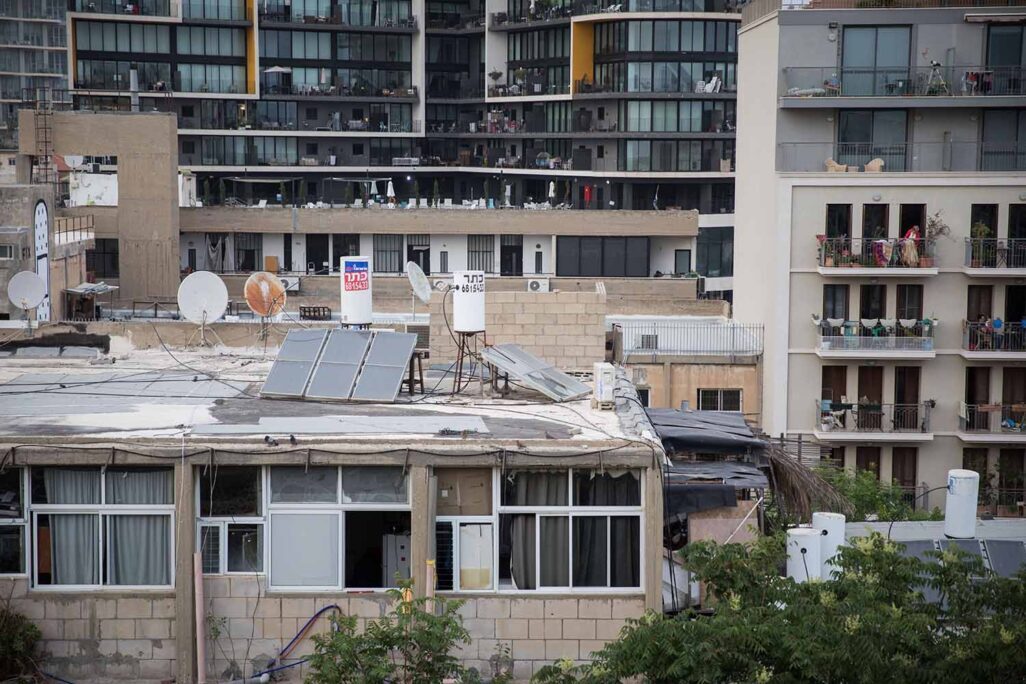
Photo caption: Buildings in South Tel Aviv. (Photo: Hadas Parush, Flash 90)
Israeli rent has skyrocketed in recent years, a trend which is significantly led by large apartments, whose prices have soared with an increase of 10-20% within three years. This is according to an investigation based on data from the company DiffeRent, a rental market surveyor, which performs background checks for tenants. The data is based on a study in which 70,000 rental advertisements published on many platforms were reviewed: Yad Shtayim, Homeless, Como, Homely, Madlan, Win Win, Facebook and others.
They aggregated ads collected by the company for rental apartments ranging in size from one to five rooms in 30 major cities in Israel, between 2019 and April 2022.
The city of Tel Aviv is leading rent increases in general, with an average increase this year of 13.8%. It is followed by Givatayim with 10.0% and Ramat Gan with 9.9%. Average rent in Tel Aviv was about 7,400 shekels ($2,170) in 2022, compared to 6,500 shekels ($1,905) in 2021.
When the data is organized by the size of the apartments, it turns out that the rent increased at the highest rate specifically in 5-room apartments. The city of Kfar Saba leads the rent increase in this index with an increase of 18.4% this year. The rent for a 5-room apartment in this city jumped from 6,200 shekels ($1,815) in 2021 to 7,300 shekels ($ 2,140) in 2022. The same jump in rent for 5-room apartments occurred in another 13 cities. Tel Aviv is in second place with 17.5%, followed by Kiryat Bialik (15.4%), Rishon Lezion (14.8%), and Modi'in (14.7%). Sharp increases were also recorded in Bnei Brak (13.9%) and Jerusalem (13.7%) where the demand for large apartments is particularly high.
"The rent in 4-5 room apartments in all cities has increased by very large percentages of up to 20% compared to the rent in 1-3 room apartments which have increased by about 9% maximum," CEO of DiffeRent, Elad Shriki, told Davar. "Young people and students live in 1-3 room apartments and the increase in rent in these apartments is due to several reasons: a lack of budget for buying an apartment, but mainly because of projects like Tama 38 and Pinui Binui [government housing projects which renovate or rebuild existing apartment blocks without incurring costs to the tenants]. Carrying out these projects mainly evicts families, who were looking to rent other apartments instead of the vacated apartment."
Rental Decreases in Kiryat Gat
Of all the big cities, only Kiryat Gat saw a 1.4% decrease in the average rents in the city. However, in Kiryat Gat there were large increases in rents in 2020, contrary to the national trend, by 10.1% on average, and by 17% in 5-room apartments. Since then the rent has been quite stable, with the exception of the 4-room apartment category, which has become more expensive every year.
Similar to Kiryat Gat, Modi'in Illit also saw price stability this year, but in a distribution where small apartments are rented with a decrease of 4-7%, while 4-room apartments became more expensive by 10.5% and 5-room apartments by 3.2%.
The data of the DiffeRent company is based on ads for rental apartments which list a price. According to them, the closing price in the rental contracts is close to the price indicated in the ads, so this is a reliable indicator for those looking for an apartment.
The average rent published by the Central Bureau of Statistics includes continuing tenants and long-term contracts, which tend to remain stable. Therefore, precisely the category of apartments offered for rent at a given time are the apartments that reflect the current price trend.
Davar received testimonies from tenants about apartment owners who are willing to compromise on the amount of rent required in negotiations, but also opposite stories – tenants who came to see an apartment based on an ad at a certain rent and after expressing interest in it, the owners of the apartment demanded a higher payment than in the ad.
This article was translated from Hebrew by Hannah Blount.






